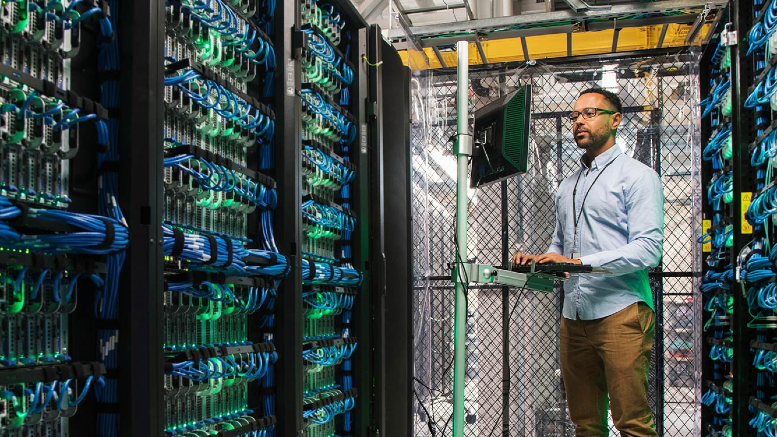Don’t send students to Industry 4.0 with a 3.0 education
January 1, 2022 / Unisys Corporation
Short on time? Read the key takeaways:
- Higher education can keep pace with transformational technology by emphasizing Industry 4.0 technologies, such as artificial intelligence (AI)
- Employing SMART educational techniques
- Ensuring their curriculum keeps pace with industry innovation
- Establishing mutually reinforcing relationships with the industry
There is no single sector in today’s economy that the explosion of transformational technologies has not revolutionized.
These advances have vastly improved the business processes and customer/user experiences of the organizations that adopt them. However, the impact is more profound for organizations that use Industry 4.0 technologies. Whether it’s the Internet of Things (IoT), the Internet of Behaviors (IoB), artificial intelligence (AI), machine learning (ML) 5G, metaverse, blockchain or data analytics, technology delivers on the promise of a more intelligent and connected ecosystem.
But the speed of this transformation and the knowledge it demands from employees pose a formidable challenge for education that is generally not met with the required urgency and expertise.
AI’s jobs impact
Consider what the media calls “technological unemployment” — the idea that AI is poised to cause another wave of job displacement. True, automation continues to replace mundane work once performed by people. But it also frees people to perform higher-level, often more meaningful work in a more efficient environment. Likewise, AI has catalyzed changes in how work and processes are delivered. As a result, it has also generated demand for new skills and jobs — including some that businesses may only discover as AI grows in sophistication.
As employers struggle to fill these jobs, higher education must accelerate its ability to teach these skills and prepare students to succeed in these demanding and in-demand jobs. That means current, and future educators must thoroughly understand and teach the science, technology, engineering and math (STEM) fundamentals their students must master for the future’s agile, fast-paced and often ambiguous world of work.
A data-driven future
Almost every organizational strategy — cost-cutting, efficiency, AI automation, enhanced experience, product/service development, personalization, seamlessness — is today driven by data, masses of data, to the degree that it is often cited as “the new currency.” This data-driven economy has created a new set of roles and job skills. Employees are expected to demonstrate data literacy — interpreting, manipulating and presenting data in a way that is not just technical or numbers-driven but accessible, translatable and insight-driving for business value.
Gone are the days of flashy PowerPoint charts and spreadsheets. Today, employees need to focus on 360-degree data visibility, integrating diverse big data sources into a composite picture so that critical information decision-makers need doesn’t remain siloed and inaccessible Employees need to be tuned to secure live data that can be manipulated on the fly and can drill down into the underlying data with a few mouse clicks.
Continuously refreshed curriculum
What about refreshing the higher ed curriculum? Suppose the curriculum remains the same year after year while the industry gallops ahead with new technologies and an ever-more intelligent workplace. In that case, students will not be prepared for that workplace. Consider how the pandemic upended the ordinary ways of working and learning. Most institutions are still adjusting to remote and blended learning, evolving ways of delivering and updating courses to align with this new world. In the meantime, employers’ expectations of their future workers’ expertise and abilities are changing so rapidly that most institutions struggle to keep up.
SMART technologies and thinking
The same imperative applies to the delivery of higher education. Self-monitoring, analysis, and reporting technology (SMART) advances enable students to consume learning in whatever format is optimal for their learning. There is SMART thinking as well (i.e., “gym for the brain”) that can help students become aware of and understand their metacognition — that is, their personalized pathways to learning and development success. Denying students access to these technologies will place them at a competitive disadvantage in the workplace.
Partnering with industry
Higher ed is also challenged to keep up with industry changes driven by near-constant breakthroughs in 4.0 technologies. For example, how can a student who started an IT course that barely mentioned ML and AI four years ago graduate today with the confidence and knowledge to provide an employer with complex ML algorithms or advanced AI automation? How will educators find lectures and teaching materials that offer tangible experiences and examples demonstrating real-world applications of the technologies? Higher ed must become proactive to overcome this challenge of keeping up with industry change. Leaders must form partnerships with industry, ensuring the education they deliver meets employers’ current and future requirements.
Summary
The industry’s transformational pace will remain challenging for higher ed to match. But higher ed can provide students with a solid foundation for succeeding in the workplace by adopting the full range of STEM fundamentals as a foundation for teaching and continuously refreshing the curriculum with insights from industry partnerships. The result will be Education 4.0 invigorating Industry 4.0 with data, technology and learning aligned and mutually reinforcing.



















